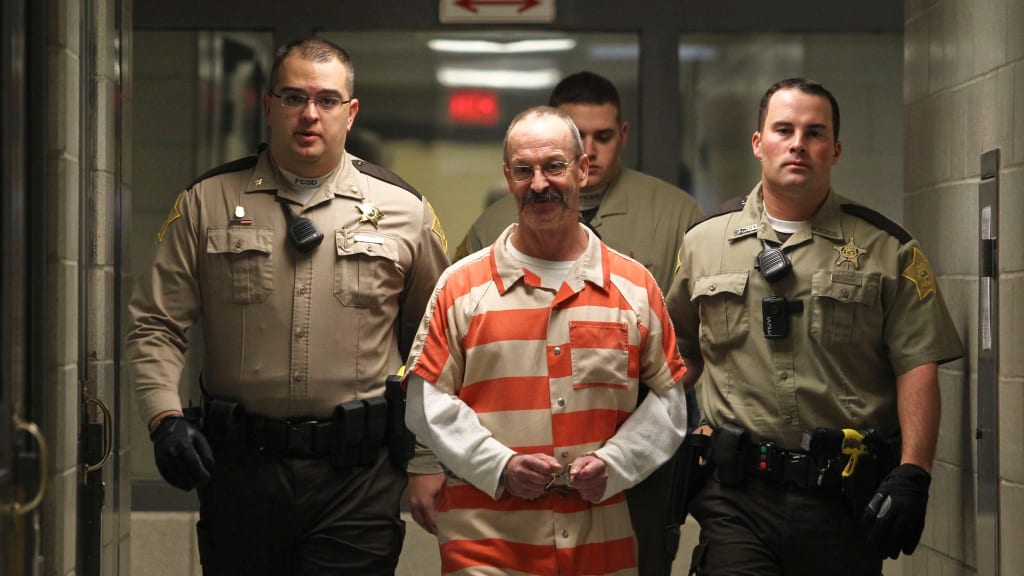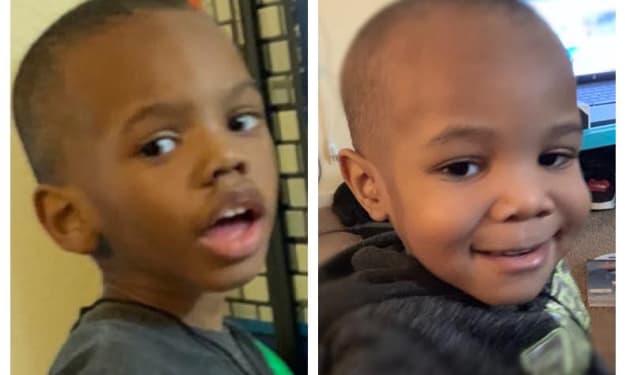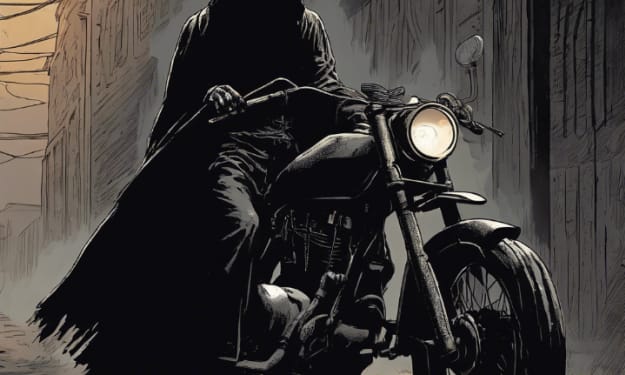The Vile Murders of Serial Killer & Cannibal William Clyde Gibson
Unveiling the Horrific Crimes of William Clyde Gibson

William Clyde Gibson III, a name synonymous with terror, stands as one of America's most notorious serial killers and cannibals. Born on October 10, 1957, in Raleigh, North Carolina, his heinous acts shocked the nation. This article delves into the life, crimes, and eventual capture of Gibson, exploring the chilling details of his murders and the investigation that brought him to justice.
Early Life and Troubled Beginnings
William Clyde Gibson III was born to William Jr., a foreman for a tree-trimming company, and Geraldine Gibson, a cashier at Sears. At the age of two, his family moved to New Albany, Indiana, where he spent his childhood. Despite Gibson's claims of a great childhood, interviews reveal underlying issues. He admitted to an alcoholic father who became loud and aggressive after drinking, although he insists he had a relatively normal upbringing.
Gibson struggled with social interactions and academics, preferring to stay at home. He was often bullied, but as he grew older, he began to bully others. His behavior escalated, leading to his first arrest at 13 for stealing a motorcycle.
Descent into Crime
Gibson's criminal activities only intensified with age. He dropped out of school, frequently clashed with the law, and developed substance abuse problems. At 16, he was sent to a juvenile facility, marking the beginning of a lifelong pattern of criminal behavior.
In his late 20s, Gibson joined the Army and was stationed in West Germany as a mechanic. During this time, he experimented with various substances, worsening his addictions. In 1979, he was arrested for car theft, resulting in a dishonorable discharge. This event led him to attempt suicide.
Marriage and Continued Downfall
In 1980, Gibson married an artist, but their relationship quickly deteriorated due to his infertility issues and escalating substance abuse. He admitted to engaging in reckless behavior and infidelity. His wife eventually left him after enduring years of his destructive habits.
Gibson's criminal record grew with incidents of DUI, armed robbery, and sexual assault. His erratic behavior and violent tendencies became increasingly apparent. In 1991, a high-speed chase with the police resulted in a severe car crash, leading to multiple injuries and another arrest.
Just eight months later, Gibson was arrested for armed robbery and sexual assault on a woman. This victim, a 21-year-old woman, was attacked in a phone booth. Gibson broke into the booth and assaulted her. While in jail, his lawyer claimed he was mentally ill, leading to a competency evaluation. Despite a low IQ of 79 and his refusal to take responsibility for his actions, psychologists found no mental illness impairing his judgment. He accepted an Alford plea, resulting in a seven-year prison sentence. During his imprisonment, his wife divorced him after 14 years of marriage.
Interestingly, while in prison, Gibson was ordered to attend a sex offender rehabilitation program but refused to admit responsibility for his crimes, making him ineligible for participation. Despite being deemed an obedient inmate, psychiatric assessments indicated poor judgment and conflicting feelings of loneliness and loss of control. Nevertheless, he was released on April 5, 1999, and added to the sex offender registry.
Return to Crime
After his release, Gibson returned to live with his mother. He began dating Kelly Bailey, but his substance abuse led to their separation in 2000. Kelly later filed a police report after he stalked and assaulted her during her newspaper delivery route. Despite visible injuries, he was never charged due to a lack of evidence. In 2001, he was arrested for stealing a motorcycle, resulting in a three-year prison sentence.
During this sentence, Gibson was allowed to spend half of his time in a hospital for addiction treatment. Hospital staff noted his lack of interest in the treatments. Diagnosed with bipolar disorder, he was prescribed Seroquel, but no severe mental illness or psychiatric disorder was noted. He was released on March 12, 2002.
The Murders Begin
On October 10, 2002, Gibson committed his first known murder. He met 44-year-old Karen Hodella at a bar in New Albany. After an argument over stolen medication, he brutally murdered her and disposed of her body. This gruesome act marked the beginning of a series of vile murders.
Final Arrests and Charges
In February 2006, Gibson stole a purse and $300 from a female acquaintance. Her husband tracked Gibson down, leading to his arrest for theft and another three-year sentence. After his release in 2009, he attempted to reform by attending church with neighbors. However, his mother’s death in 2012 seemed to push him further into a dark abyss, leading to the murders of Stephanie Kirk and Christine Whitis.
A Pattern of Violence
Gibson's violent spree continued. On March 24, 2012, he murdered 35-year-old Stephanie Kirk after a day of drug use and sexual assault. He buried her body in his backyard. Just weeks later, on April 18, 2012, he killed 75-year-old Christine Whitis, a friend of his late mother. Gibson dismembered her body and kept her breast as a macabre souvenir, which he later carried to a restaurant.
Cannibalistic Acts
The extent of Gibson's depravity was revealed in chilling detail during his confessions and interviews. He admitted to not only killing his victims but also consuming parts of their bodies. Gibson recounted how he would cut off pieces of his victims, sometimes cooking and eating the flesh. He described the act of eating human flesh with a disturbing casualness, reflecting his complete detachment from the horror of his actions.
In particular, during his interview with a podcast, Gibson detailed his actions with Karen Hodella, explaining how he mutilated her body and consumed parts of her flesh. This cannibalistic behavior added a grotesque layer to his already horrifying crimes, highlighting the depths of his depravity.
Capture and Confession
Gibson’s crimes came to light when his sister discovered Christine Whitis’s body in his garage. The police arrested him shortly after. During the investigation, Gibson confessed to the murders of Karen Hodella and Stephanie Kirk, leading authorities to her buried body. His sister had already been suspicious of him for some time. She once told him about a dream where he slit someone's throat and went to prison. She later discovered that her dream had a terrifying connection to reality.
Trial and Sentencing
In October 2013, Gibson was found guilty of the murders. The jury took less than 20 minutes to convict him, and he received the death sentence. Despite multiple appeals, his death sentences were upheld. Prosecutors presented an interview William had given to the investigators upon his arrest, during which he claimed that an evil had overcome him and had made him commit the crimes.
During his trial, Gibson continued to show a lack of remorse, even getting a tattoo on the back of his head that read “Death Row X3” to signify his three death sentences. He confessed to additional murders and hinted at even more victims, which remains unverified.
Chilling Admissions
Gibson's confessions did not end with the known victims. In interviews and podcasts, he claimed responsibility for additional murders, bringing his total victim count to over 30. He detailed his gruesome acts, including cannibalism, in a matter-of-fact manner, horrifying listeners with his lack of remorse.
Despite his incarceration, Gibson continued to appeal his sentences. In 2018, he was featured in the documentary “Inside Death Row,” where he provided further insights into his twisted mind. He openly discussed his crimes and cannibalistic tendencies on the podcast "Where the Bodies Are Buried," further shocking the public.
Conclusion
William Clyde Gibson’s vile acts have left an indelible mark on the history of American crime. His life of violence, substance abuse, and murder culminated in a reign of terror that claimed numerous lives. Despite his eventual capture and sentencing, the full extent of his crimes may never be known. His chilling confessions and detailed accounts of cannibalism provide a horrifying glimpse into the mind of a true monster.
About the Creator
Sally A
Animal lover 🐾 | Health enthusiast 💪 | Self-development junkie 🌱 | Beauty explorer 💄 | True crimes & mystery enthusiast 🕵️♀️ | Let's journey together! 💫
Enjoyed the story? Support the Creator.
Subscribe for free to receive all their stories in your feed. You could also pledge your support or give them a one-off tip, letting them know you appreciate their work.






Comments
There are no comments for this story
Be the first to respond and start the conversation.